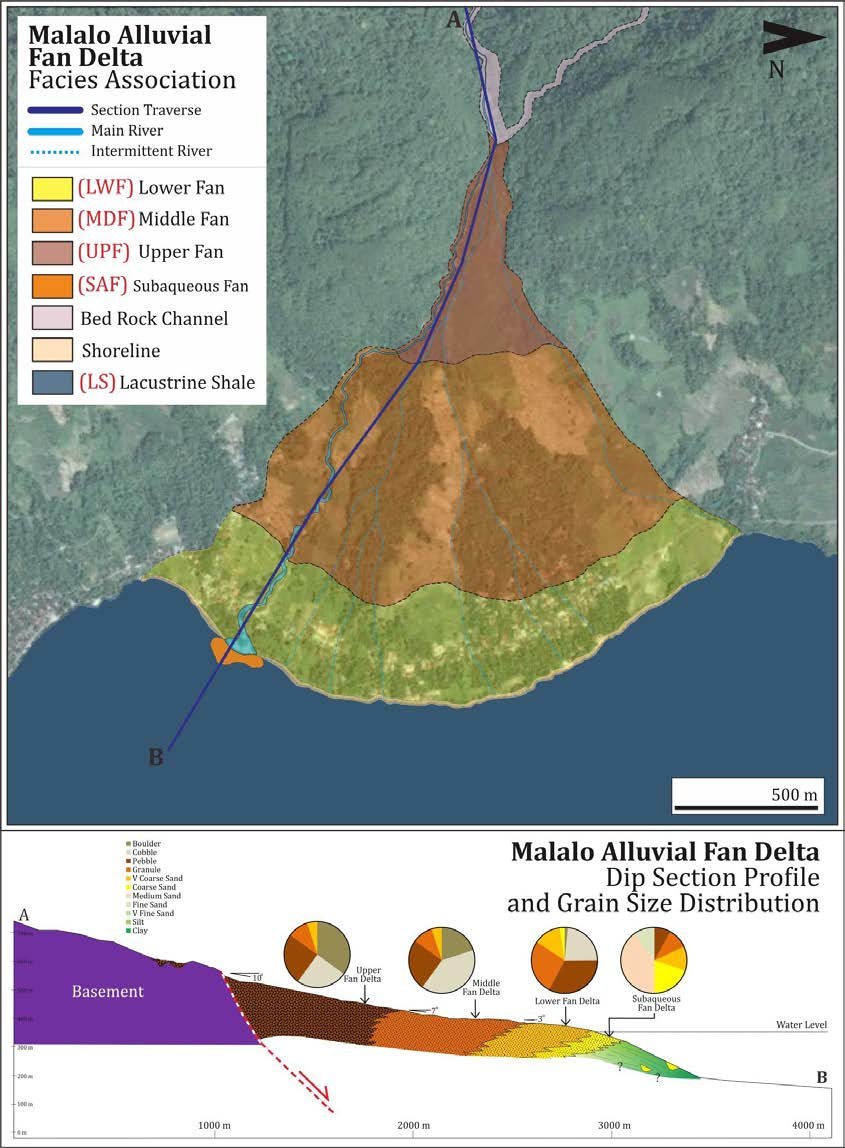Fan Delta
Delta BreezSmart is a remarkable feat for residential ventilation. Operate your near-silent ventilation fan without lifting a finger - you just might forget it’s there. Delta Group Links: Delta Group: Delta Networks, Inc. Home Products & Services Components DC Brushless Fans & Blowers BFB Series BFB Series: Product Spec. Fan deltas are very varied in their morphology and three broad types have been recognized on the basis of gradient and water depth of the coastal shelf, namely shelf-type (shallow water) fan deltas, slope-type fan deltas, and Gilbert-type fan deltas (Reading and Collinson, 1996). From: Treatise on Estuarine and Coastal Science, 2011.
The main difference between alluvial fan and delta is that alluvial fans are formed from the deposition of water-transported materials, whereas delta is formed from the deposition of sediments carried by rivers at an estuary.
The terms alluvial fan and delta refer to the landforms which are formed from the deposition of material that comes with flowing water. Generally, alluvial fans form at elevated places such as mountains while delta forms at the regions near the ocean.
Key Areas Covered
Fan Delta Geology
1. What is an Alluvial Fan
– Definition, Features, Formation
2. What is a Delta
– Definition, Features, Formation
3. What is the Difference Between Alluvial Fan and Delta
– Comparison of Key Differences
Key Terms
Alluvial Fan, Delta, Sediments, Water Bodies
What is an Alluvial Fan
An alluvial fan is a landform that has a triangular shape and forms due to the deposition of materials that are transported by water. These materials are known as “alluvium”. These are usually unconsolidated sedimentary deposits. Typically, these landforms form in elevated regions such as mountains. This is because these regions have a rapid change in slope at a short distance. Due to this rapid gradient of landscape slope, the rivers that flow on these regions have a high velocity; therefore, the coarse materials can remain in the flow. When the river reaches a planar region, the stream loses the energy to move its sediment materials. Ultimately, the sediments spread out on the ground, forming the alluvial fan. An alluvial fan has three major regions: proximal fan, medial fan and distal fan.
An alluvial fan can exist in a wide range of sizes. For example, some alluvial fans are on the scale of meters at the base and on kilometre-scale at the edge of the fan. Sometimes, two or more alluvial fans tend to combine and form a continuous apron. Often, alluvial fans form in desert regions. This is because deserts often experience flash floods from nearby thunderstorms in local hills. However, these landforms can also form in humid regions—E.g. near the Koshi river in Nepal. Moreover, alluvial fans are often subject to floods; sometimes, they are dangerous than usual flooding.
What is a Delta
Delta or river delta are landforms created due to the deposition of sediments carried by water in the river. These landforms form at estuary (the point where a river connects to the ocean). This deposition occurs as the river water flow leaves its mouth and enters a slow-moving water region such as the ocean. Not only at estuaries, but these landforms also form at places where the river meet a lake, sea, reservoir, and rarely, another river.
Figure 2: Structure of a Delta
The shape and the size of this deposition depend on the watershed process and the receiving mechanism. The size, geometry and location of the receiving water body also affect the formation of the delta. From ancient times to today, these rivers deltas have been very important in human civilizations since agricultural lands are always located near the water bodies. Moreover, these landforms are important ecologically since there are a number of different animal and plant species living in these regions.
Difference Between Alluvial Fan and Delta
Definition
An alluvial fan is a landform that has a triangular shape and forms due to the deposition of materials that are transported from water. In contrast, a delta or river delta is a landform created due to the deposition of sediments carried by water in the river.

Location
Alluvial fans form at mountain regions while deltas form at ocean regions
Elevation
While alluvial fans have a higher elevation, deltas have a lower elevation.
Formation
Moreover, alluvial fans form from the deposition of coarse material that comes with water flow at a high velocity while deltas form from the deposition of sediments that occurs when a flowing water body meets a non-flowing water body.
Size and Shape
Alluvial fans can vary in size, but their shape is always triangular. Deltas are usually smaller than alluvial fans and their shape varies with the nature of moving and non-moving water bodies.
Conclusion
Fan Delta River
Alluvial fan and delta are landforms that form from the deposition of sediment materials. The main difference between alluvial fan and delta is that alluvial fans form from the deposition of water-transported materials whereas delta form from the deposition of sediment carried by rivers at an estuary.
Reference:
1. “Alluvial Fan.” Encyclopædia Britannica, Encyclopædia Britannica, Inc., 18 Apr. 2020, Available here.
Image Courtesy:
Fan Delta Example
1. “Mini Alluvial Fan Imprinted with Footprints” By Wing-Chi Poon – at Salt Creek Interpretive Trail, Death Valley National Park, California, USA (CC BY-SA 2.5) via Commons Wikimedia
2. “Line5066 – Flickr – NOAA Photo Library” By Alaska ShoreZone Program NOAA/NMFS/AKFSC; Courtesy of Mandy Lindeberg, NOAA/NMFS/AKFSC. – NOAA Photo Library: line5066, Public Domain) via Commons Wikimedia
Fan Deltas
Two types of coarse-grained deltas are recognized: fan-deltas and braid deltas. Fan-deltas are gravel-rich deltas formed where an alluvial fan is deposited directly into a standing body of water from an adjacent highland. They occupy a space between the highland (usually a fault-bounded margin) and the standing body of water. In contrast, braid deltas (here introduced) are gravel-rich deltas that form where a braided fluvial system progrades into a standing body of water. Braid deltas have no necessary relationship with alluvial fans, as exemplified by fluvioglacial braid deltas. Braid deltas have previously been classified as fan-deltas even though the geomorphic and sedimentologic settings of the two systems can be vastly different. Braid deltas are a common present-day geomorphic feature and are abundant in the geological record.
Fan Delta Deposits

Fan-deltas and braid deltas can be distinguished in the rock record by distinctive subaerial components of these depositional systems; the shoreline and subaqueous components of both are similar. Fan-delta sequences have a subaerial component that is an alluvial-fan facies comprising interbedded sheetflood, debris-flow, and braided-channel deposits. Fan-deltas produce small (a few tens of square kilometres), wedge-shaped bodies of sediment, commonly displaying high variability in paleocurrent patterns and abrupt changes in facies. The deposits are generally very coarse grained (with large out-sized clasts), very poorly sorted, matrix-rich, polymictic, heterolithic, partially cemented by penecontemporaneous carbonate, and have low porosity and permeability. Braid-deltas, in contrast, have a subaerial component consisting entirely of braided-river or braidplain facies. Their deposits display better sorting, roundness, and clast orientation than do fan-delta sediments; they lack a muddy matrix; they display size grading and bar migration; they commonly have a sheet geometry with high lateral continuity (tens to hundreds of square kilometres); and they exhibit moderate to high porosity and permeability. Valuable paleogeographic and tectonic information concerning the proximity of highlands and major fault zones may be misinterpreted or lost if these two coarse-grained deltaic systems are not differentiated.